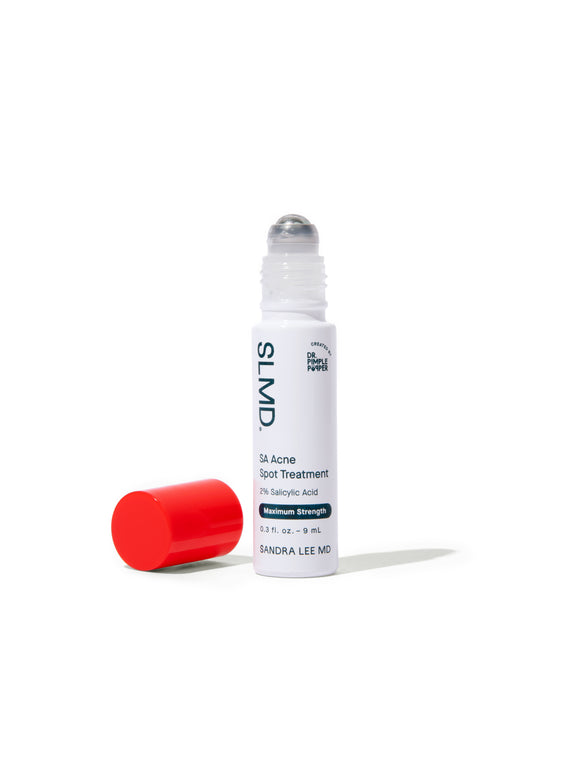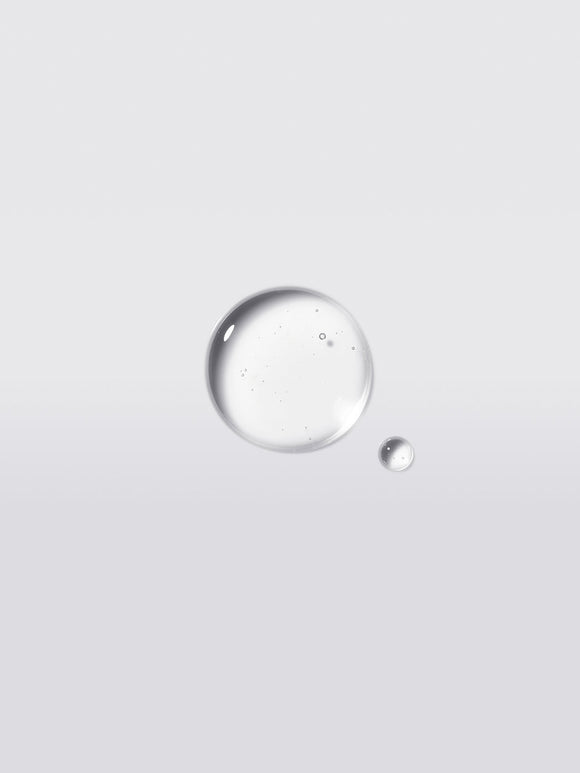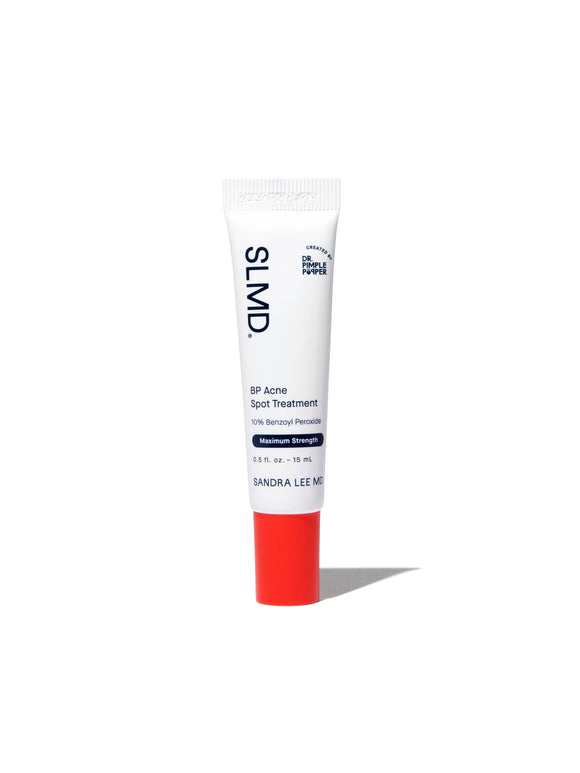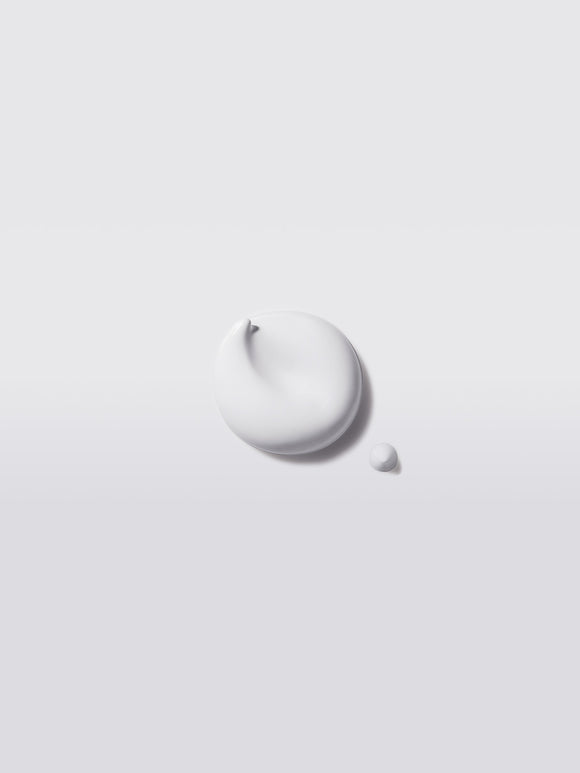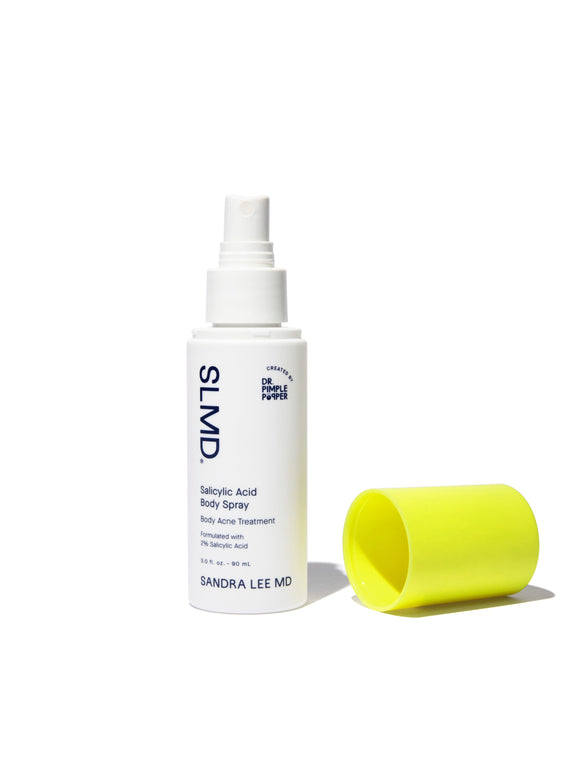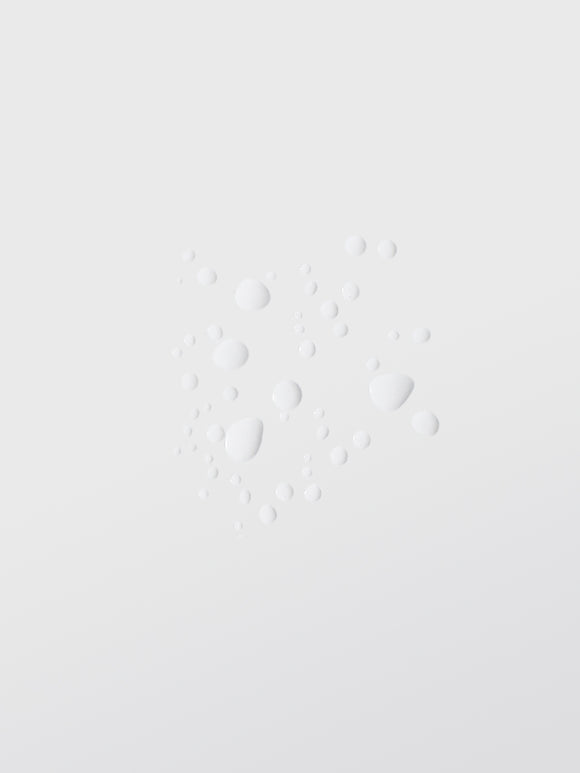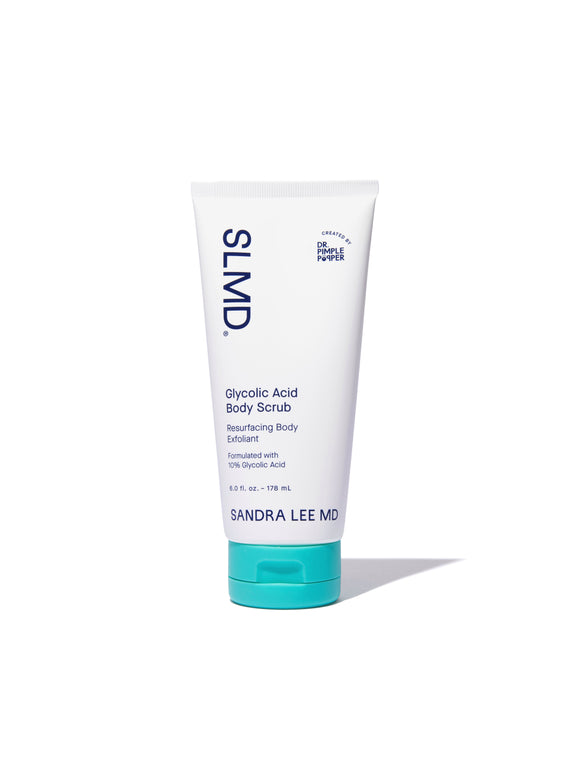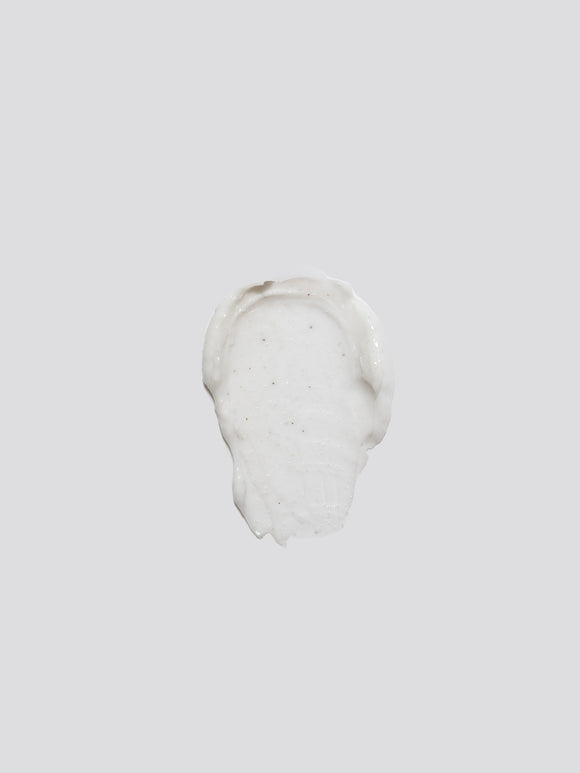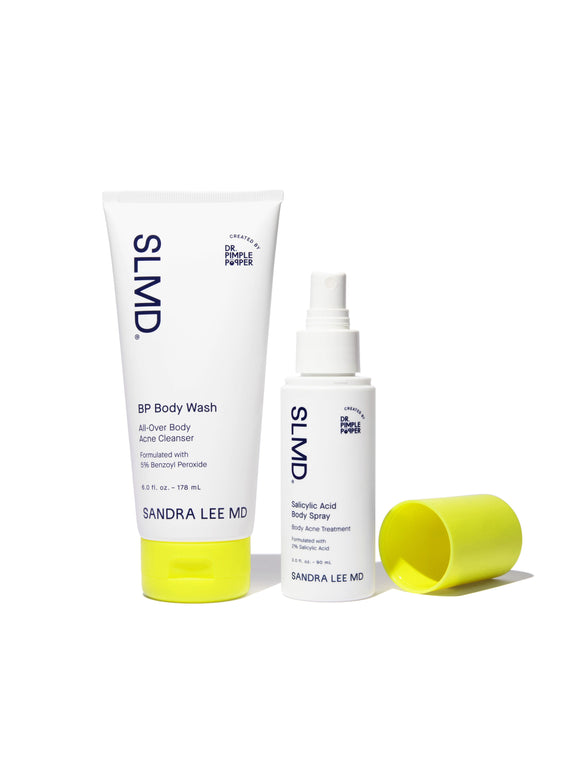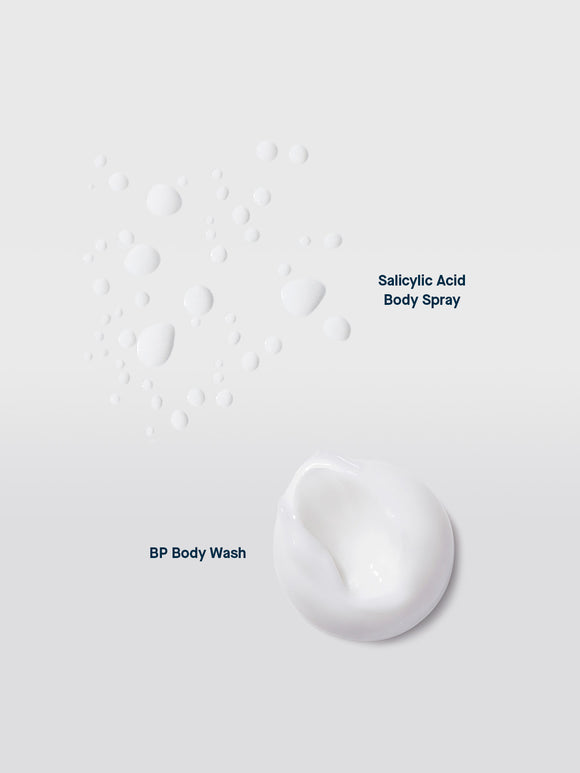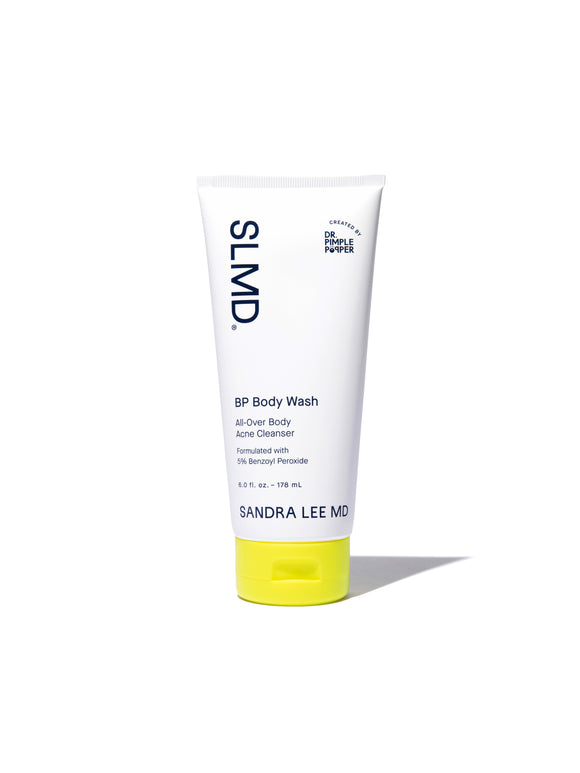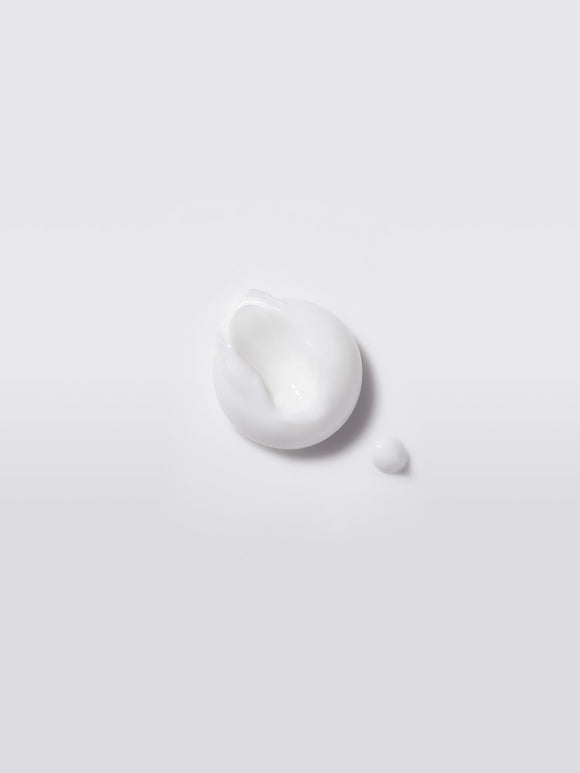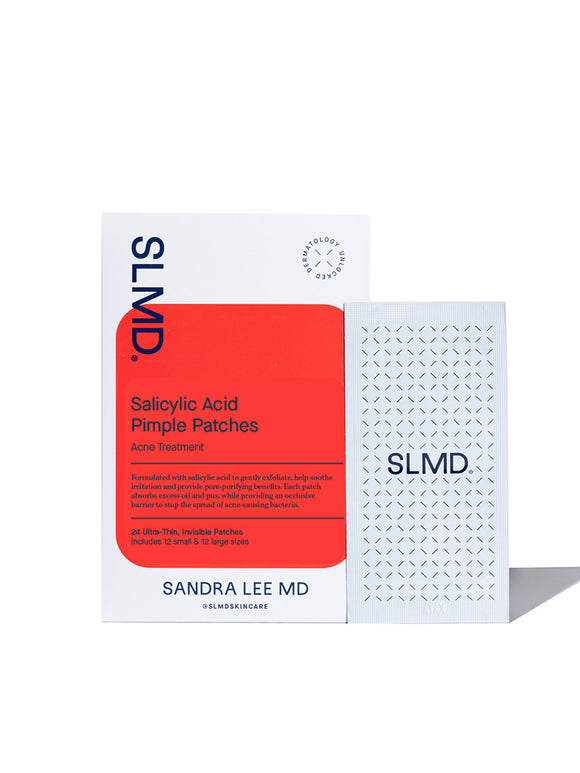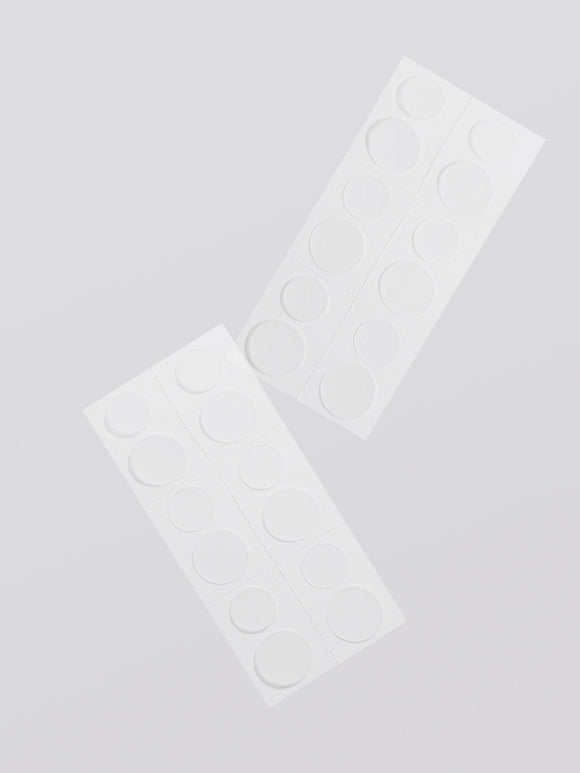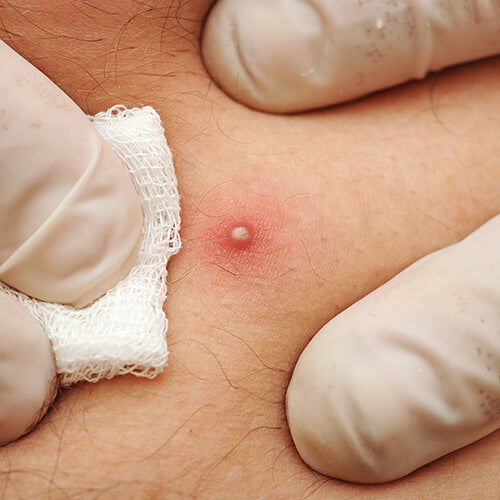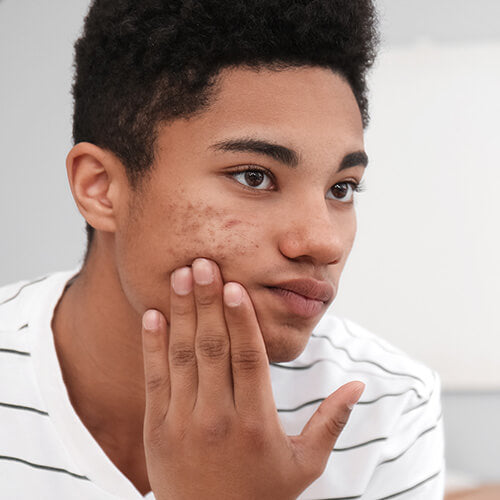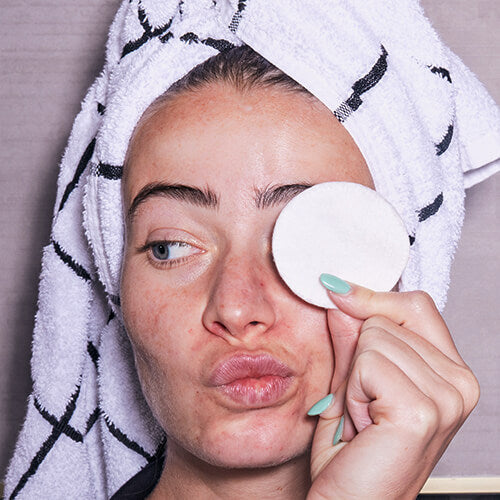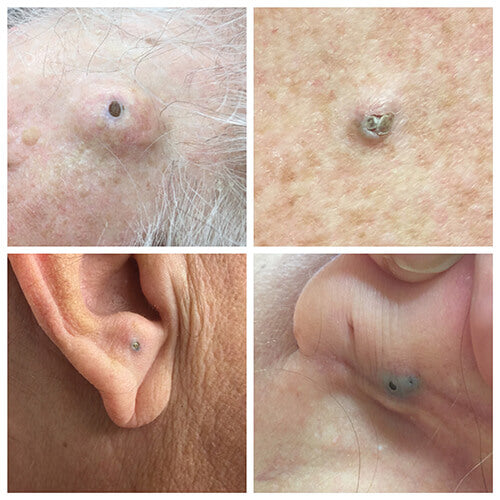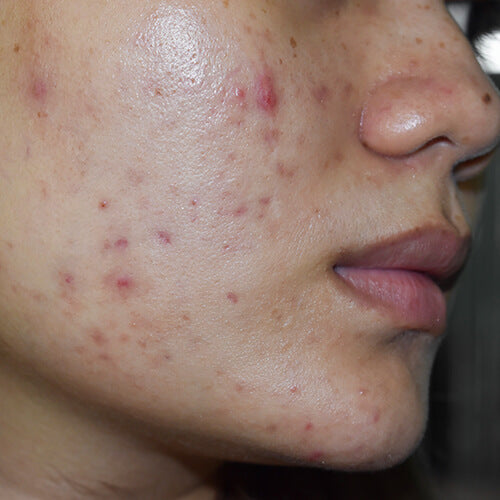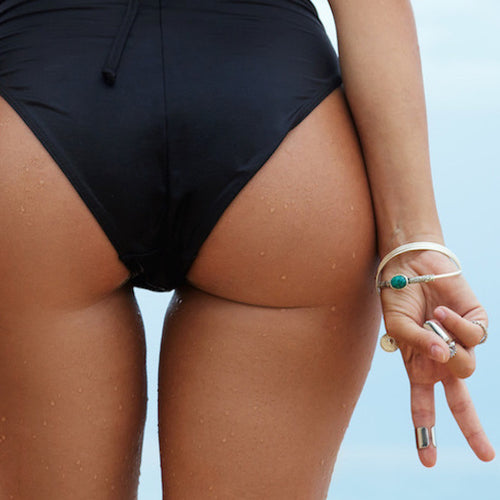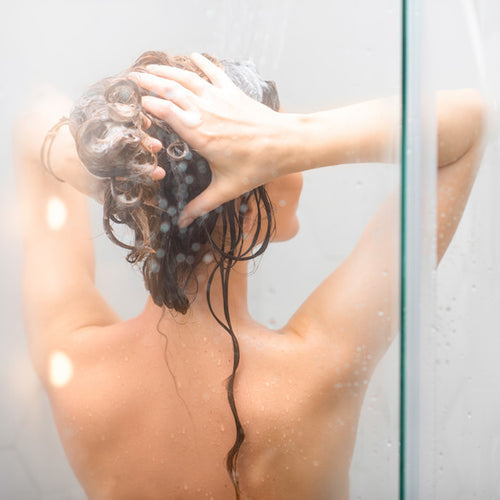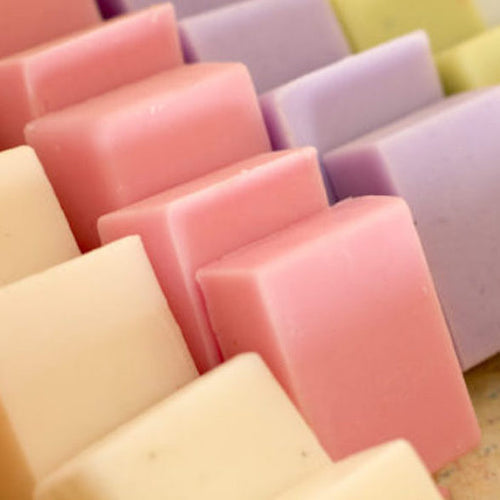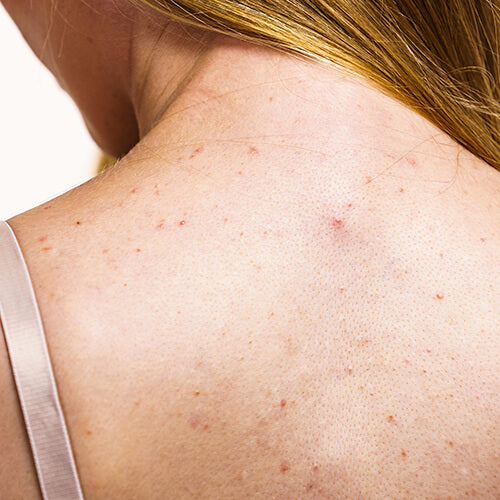
How to Treat & Prevent Body Acne (aka Bacne, Buttne, and More)
Dr. Pimple Popper's ultimate guide to treating and preventing bacne, chestne, buttne — and everything in between.
Published:
5 minute read
Body acne can be just as challenging and discouraging as facial acne, affecting both skin health and self-esteem. The condition is incredibly common, typically emerging on the back, chest, and shoulders—areas where oil glands are most concentrated. In fact, body breakouts are so universal, they have their own lingo: with terms like bacne, buttne, even chestne, popping up in recent years.
But no matter what you call it, says dermatologist and SLMD Skincare founder Sandra Lee, MD (aka Dr. Pimple Popper), understanding the causes of your body acne is the first step towards effective treatment and prevention. Here, we delve into the most common causes of body acne and offer practical advice on how to manage it.
Most common causes of back and body acne
#1 Your skin makes a lot of oil
Like facial acne, body acne often stems from the overproduction of oil by sebaceous glands. When excess oil mixes with dead skin cells and debris, it can clog pores and lead to breakouts, says Dr. Lee. But why would your skin produce a lot of oil to begin with? There are a number of reasons, including:
- Age
- Hormonal fluctuations
- Genetics
- Stress
- Diet
- Medications
- Cosmetics
- Environment
While we obviously can’t change our DNA, there fortunately are a few things on that list that you do have some level of control over. Making a few simple lifestyle changes can often have a big impact on your acne (more on that below).
#2 You’re hanging out in sweat-soaked clothing
Working up a sweat exercising is a great way to relieve stress, stay in shape, and rid the body of toxins. But problems can arise if you don’t shower right afterwards. It can be tempting to skip the post-workout shower (especially if you didn’t sweat much) — but sitting around in tight, non-breathable fabrics harboring sweat and bacteria is a recipe for body acne.
This type of acne is known as acne mechanica, which is caused by friction and occlusion — i.e., when clothing or gear (like hats or shoulder pads) rubs against your skin and it can’t breathe. This warm, moist environment traps dirt, dead skin, oil and bacteria, creating the perfect breeding ground for pimples.
It’s worth noting that staying in your sweaty clothes can also lead to folliculitis (commonly called “fungal acne”), which is a hair follicle infection that can resemble acne breakouts.
#3 You’re using the wrong hair and body products
Most people with acne-prone skin know to steer clear of comedogenic ingredients and unnatural oils, but all too often, that stops below the neck. Because the chest and back are also covered in hair follicles, they also have pores that can become clogged and irritated.
Acne cosmetica arises from the use of certain cosmetic products on the face or body, including moisturizers, body powders, deodorants and makeup. Sometimes, the residue from our hair products or added fragrance can exacerbate skin irritation and acne. This is commonly called pomade acne, says Dr. Lee, and it’s similar to acne cosmetica, which occurs when ingredients like heavy oils and waxes occlude the pores, trapping excess oil and bacteria.
#4 You’re not doing enough laundry
Believe it or not, your sheets and towels are brimming with bacteria — including C. acnes, the main culprit that causes inflammatory back and body acne. Sleeping on the same pillowcase, using the same towel for too long, or not regularly washing sheets, can lead to a buildup of gunk, including:
- Oil
- Dead skin cells
- Skincare/makeup residue
- Sweat
- Dirt
- Bacteria and other microbes
Any and all of these contaminants can easily become transferred onto our skin, possibly clogging pores.
Dr. Pimple Popper's Body Acne Picks
Dr. Pimple Popper’s tips to treat and prevent body acne
#1 Use body-strength acne-fighting ingredients in your routine
We’ve talked about this before, but it’s worth mentioning here: when it comes to treating and preventing acne, face and body products are not interchangeable. This is because your body skin is thicker and tougher than the skin on your face — so you need higher concentrations of active ingredients to penetrate. Here are a few of Dr. Lee’s favorites:
#2 Practice proper hygiene
If you’re dealing with back and body acne, says Dr. Lee, daily showering (incorporating those key ingredients above) is a must. She also recommends a rinse right after you exercise (or anytime you’ve perspired), and after being at the beach or pool, since sunscreen can clog pores. If you simply can’t make it happen, at least spritz on an acne treatment spray and change your clothes until you can jump in the shower.
#3 Wear breathable fabrics
Choose loose-fitting clothes made from breathable fabrics like cotton to minimize friction and allow sweat to evaporate. This is especially when you’re working out or if you’re sitting in an office chair for hours on end.
#4 Do your laundry — often
Be sure you are washing all of the items that come in contact with your body — sheets, towels, clothing, sports gear/equipment — at least once a week. This will help eliminate not only acne-causing bacteria, but also the accumulation of oil, dead skin, and cosmetic residues that build up over time.
It’s worth noting that sometimes, certain ingredients in detergents (particularly fragrance) can cause or contribute to skin reactions, including acne breakouts. To rule out this possibility, try using laundry products labeled “hypoallergenic” or “for sensitive skin.”
#5 Adjust your lifestyle
Just like with facial acne, small changes to your habits can sometimes make a big difference. Managing your stress, getting enough sleep and exercise, and eating a healthy diet can all go a long way toward maintaining your skin health.
#6 Read your product labels
As noted above, sometimes body acne is caused by personal care products. If you notice an increase in breakouts after using a certain cosmetic product, take a break and look closer at the ingredients. If your symptoms subside, avoid that ingredient when making your next purchase.
#7 Talk to your dermatologist
If you’ve tried these tips above and you’ve been using high-quality over-the-counter products without results, it’s time to check in with your dermatologist. There are a host of prescription medications, topical treatments, and professional skin treatments that can be effective for severe cases of back and body acne, says Dr. Lee.

Dr. Lee's Last Word
Body acne and facial acne are really caused by the same thing: when pores clog up with sebum and dead skin, which sometimes elicits an inflammatory response — especially when C. acnes bacteria gets involved. But with some simple lifestyle habits and a consistent skincare routine, you can manage your acne, no matter where it shows up.



